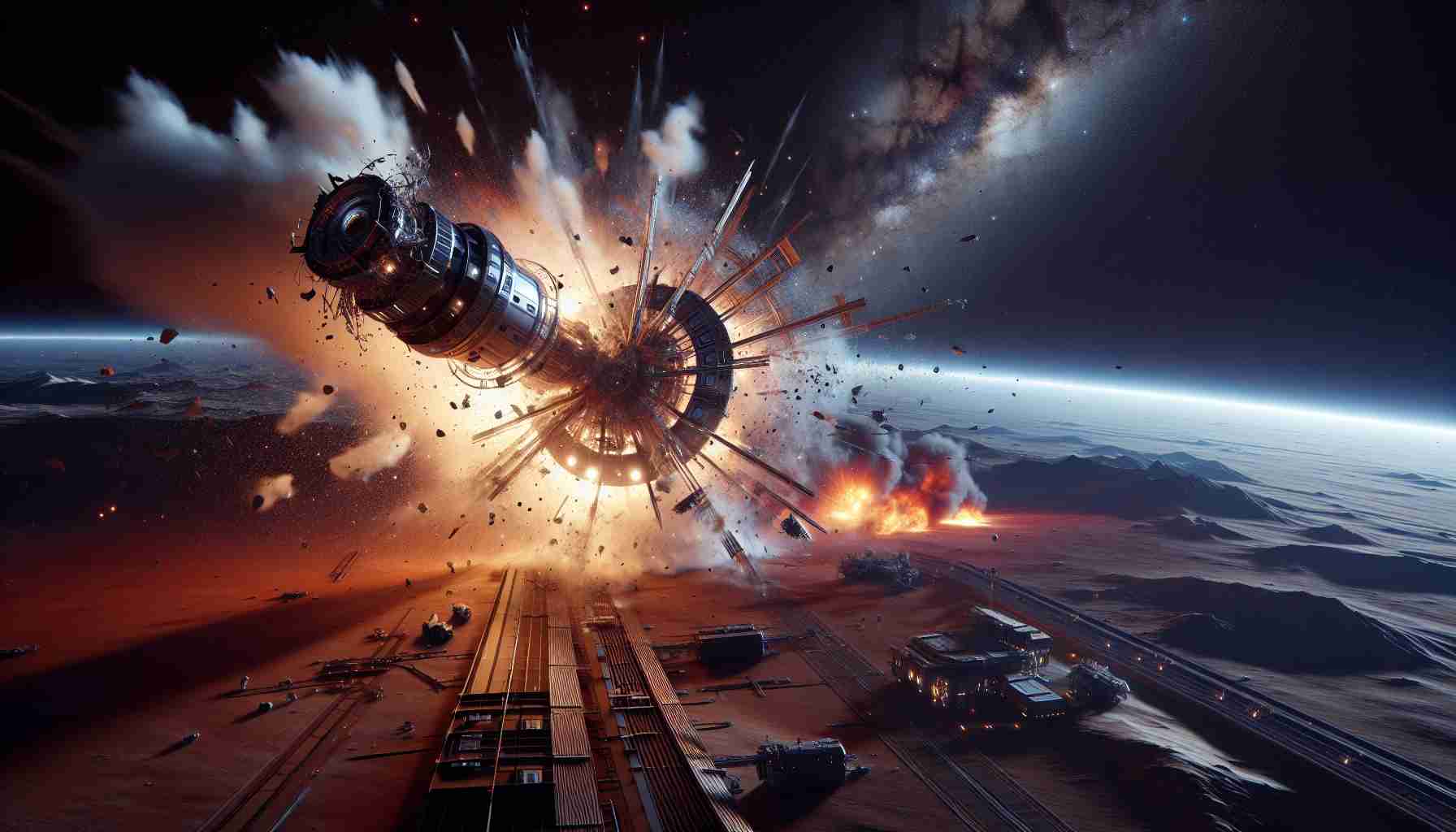Catastrophic Failure During Test Flight
On January 16, 2025, SpaceX’s Starship, a groundbreaking vehicle aimed at future planetary exploration, encountered severe difficulties during its seventh test flight, resulting in an explosion shortly after launch from Boca Chica, Texas. This mission was crucial for advancing the capabilities of reusable spacecraft, but it took a disastrous turn when communication with the rocket was severed around eight minutes post-liftoff, leading to an event SpaceX termed a “rapid unscheduled disassembly.”
What Caused the Mishap? Initial investigations pointed to an oxygen and fuel leak above the engine firewall, initiating a critical pressure surge that the system could not manage. Elon Musk, the CEO of SpaceX, promptly shared plans for immediate enhancements to prevent future occurrences. He emphasized the need for stringent leak checks and proposed improvements to fire suppression and venting systems.
Safety Protocols Enforced In response to the incident, airlines operating over the Gulf of Mexico modified their routes to steer clear of falling debris. The Federal Aviation Administration (FAA) also temporarily restricted air traffic in the vicinity. Amid these challenges, SpaceX successfully retrieved the Super Heavy booster, showcasing its unique recovery technology.
Looking Ahead Despite this setback, the test reinforced the complexity and ambitious nature of advanced aerospace engineering. SpaceX remains focused on refining Starship, continuing its mission to transform space travel for future generations.
The Broader Implications of SpaceX’s Starship Setback
The catastrophic failure of SpaceX’s Starship during its recent test flight resonates far beyond the confines of aerospace innovation. Such incidents underscore the inherent risks associated with pioneering technologies, particularly in the realm of space exploration. As humanity inches closer to establishing a foothold in extraterrestrial environments, failures like this invoke critical discussions around safety regulations and operational accountability. This could prompt regulatory bodies globally to tighten standards, potentially reshaping the governance of air and space travel.
The implications also extend to societal perceptions of space travel. Despite the enthusiasm surrounding the possibilities of interplanetary missions, failures may engender skepticism among the public. This shift in perception could influence funding and support for space initiatives, emphasizing the need for transparency in communication about risks, successes, and failures.
Economically, every setback inflicts a toll not only on the immediate stakeholders but also on the broader aerospace supply chain, which relies on progress and reliability to sustain momentum. With advancements often requiring significant investment, future trends may lean toward enhancing safety protocols and increasing investment in research to mitigate risks. This focus on fortifying technologies could also spark innovations that ultimately benefit terrestrial applications, from improving engineering practices to enhancing materials science.
In the long run, these challenges could lead to a more cautious yet ultimately sustainable approach to space exploration, prioritizing safety and reliability as humanity ventures deeper into the cosmos. The road ahead remains steep, but lessons learned from failures like these forge a more resilient path for future endeavors in space.
SpaceX Starship Test Flight: Lessons Learned and Future Innovations
The recent mishap during SpaceX’s Starship seventh test flight has brought to light both the challenges of aerospace engineering and the resilience of innovation. While the outcome was unfortunate, there is much to consider about the future of space travel and the lessons learned from this event.
What Went Wrong?
On January 16, 2025, SpaceX’s Starship experienced catastrophic failure shortly after its launch from Boca Chica, Texas. The failure resulted from a critical leak of oxygen and fuel, which culminated in a pressure surge, leading to what SpaceX referred to as a “rapid unscheduled disassembly.” This incident raised substantial questions regarding the design and safety protocols in place for such advanced spacecraft.
Key Takeaways from the Incident
– Investigation and Improvements: SpaceX has vowed to conduct a thorough investigation to identify the root causes of the failure. Initial reports suggest that tighter quality control during assembly and more rigorous testing of components may be necessary.
– Enhanced Safety Protocols: Following the explosion, airlines that operate over the Gulf of Mexico were required to alter their flight paths to avoid potential debris. The Federal Aviation Administration (FAA) also imposed temporary flight restrictions in the affected airspace, highlighting the regulatory oversight essential for maintaining safety standards.
Future Safety Measures
In addressing the failures, Elon Musk articulated a commitment to improving fire suppression systems and leak checks on the spacecraft. The goal is to create a safer and more reliable launch vehicle, as safety is paramount in the exploration of space. These improvements will be integral in paving the way for future test flights and actual missions.
Advances in Recovery Technology
Notably, amidst the chaos of the failing mission, SpaceX successfully retrieved the Super Heavy booster, showcasing their pioneering recovery technology. This technology is crucial for lowering the costs of space missions, enabling rapid reuse of flight hardware—a core principle behind SpaceX’s operational model.
The Road to Recovery
Looking ahead, the mishap has not deterred SpaceX from its ambitious goals. The company remains steadfast in its mission to develop Starship for interplanetary travel. They are committed to fostering innovation while learning from setbacks. The aerospace community will be watching closely as enhancements are implemented, setting the stage for potential breakthroughs in space exploration.
Market Implications and Industry Trends
The incident also presents challenges and opportunities for the broader aerospace market:
– Investors’ Confidence: Stakeholders may want reassurances about risk management and safety protocols following the failure. The incident could impact future funding rounds as investors assess the viability of ongoing projects.
– Public Perception of Space Travel: Setbacks like these can shape public attitudes towards space tourism and exploration. Clear communication and transparent problem-solving from SpaceX will be crucial in maintaining public interest and support.
– Regulatory Changes: The FAA’s role in overseeing test flights is likely to evolve, incorporating lessons learned from this incident into future regulations for commercial space travel.
Conclusion
The unfortunate outcome of SpaceX’s seventh test flight serves as a reminder of the complexities and inherent risks involved in pushing the boundaries of aerospace technology. As SpaceX works to address the identified weaknesses, innovations and rigorous safety practices will be essential. The future of space travel depends on companies like SpaceX learning from their experiences, ensuring that humanity can successfully venture beyond Earth.
For more insights on space innovation and exploration, visit SpaceX for updates and detailed analyses.
















